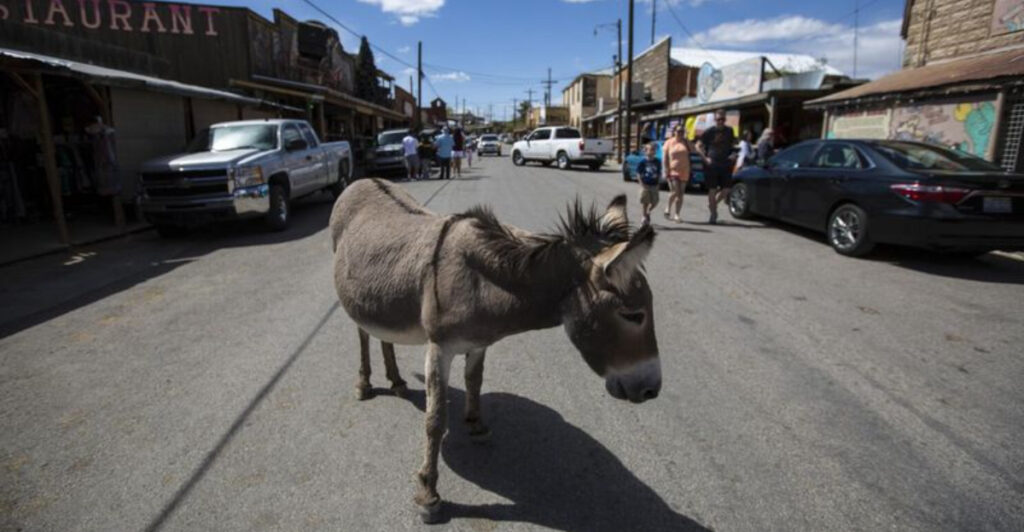Tucked away in the Black Mountains of Arizona lies Oatman, a ghost town with a twist. This former gold mining hub along Route 66 nearly vanished after the mines closed, but found unexpected salvation through wild burros left behind by miners. Today, these descendants of mining donkeys don’t just roam the streets—they run the show, with one special burro even serving as the town’s honorary mayor.
Gold Rush Ghosts and Burro Saviors
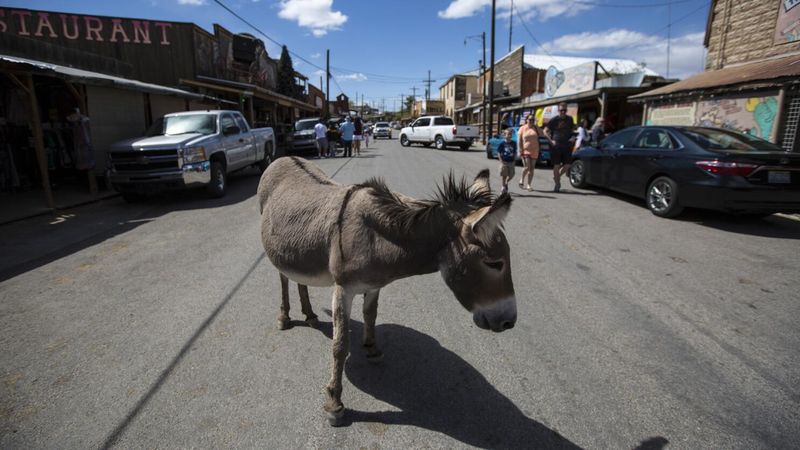
When gold fever faded in the 1940s, Oatman seemed destined for abandonment. Miners packed up and left, but they couldn’t take everything—their trusty donkeys stayed behind, adapting to the harsh desert landscape.
These abandoned animals multiplied over decades, creating generations of wild burros that eventually wandered back into town. What could have been just another forgotten dot on old maps transformed into a living attraction precisely because these persistent creatures reclaimed the streets.
The burros’ presence attracted curious travelers, breathing new life into storefronts that would otherwise have crumbled into dust.
Walter the Wonder Donkey: Mayor with Hooves
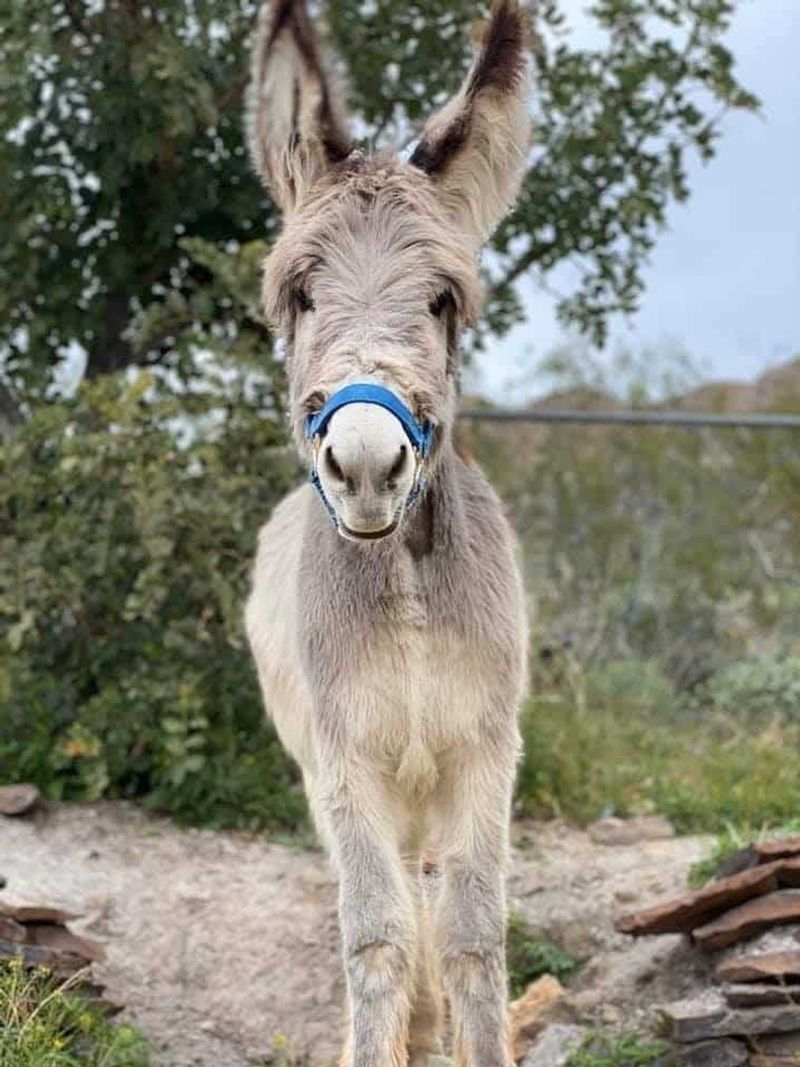
Rescued as an orphaned baby burro, Walter found himself adopted by caring Oatman residents who saw something special in his soulful eyes. The town council made history by appointing him honorary mayor—a title that fits perfectly in a place where burros command more respect than politicians.
Unlike traditional mayors worried about approval ratings, Walter’s duties include looking adorable and accepting gentle pets from adoring tourists. His popularity has spawned merchandise including calendars, t-shirts, and even a children’s book.
Visitors often plan their Route 66 adventures specifically to meet this four-legged public servant with his distinctive gray coat and long, expressive ears.
Morning Burro Commute on Main Street
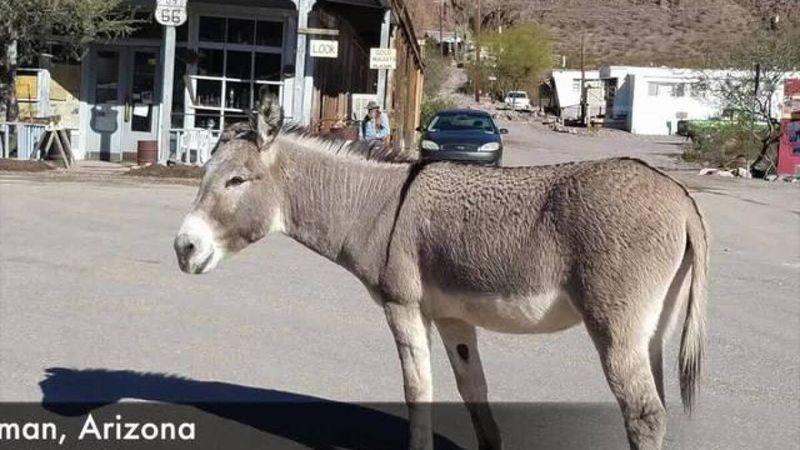
Sunrise in Oatman brings a peculiar rush hour. From the surrounding hills, dozens of wild burros descend upon the wooden boardwalks, claiming their territory for another day of tourist interactions and treats.
Shops open their doors selling special alfalfa pellets—the only approved snack for these protected animals. Visitors quickly learn the unwritten rules: offer food with flat palms, keep a respectful distance, and never attempt to ride or harass these federally protected creatures.
The burros have developed their own routines, with some preferring specific porches or doorways. Others have mastered the art of gently nudging camera-wielding tourists for more treats.
Hollywood Romance Meets Desert Characters
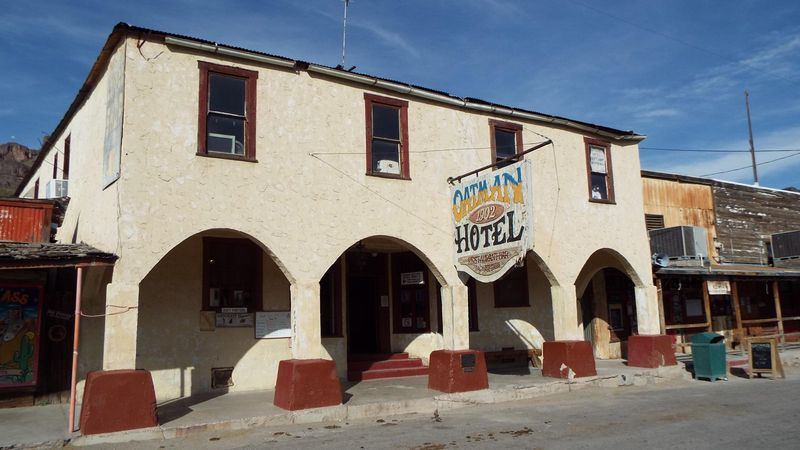
Few visitors realize they’re walking the same floorboards as silver screen legends. The historic Oatman Hotel proudly displays evidence of its most famous guests—Clark Gable and Carole Lombard spent their honeymoon night here in 1939, adding glamour to the dusty mining town.
Today, dollar bills covered in signatures plaster the hotel’s walls, a tradition started by miners leaving emergency funds for their next visit. Between staged gunfights that erupt on the street at high noon, visitors can explore this living museum where Hollywood history and wild west authenticity collide.
Film crews still occasionally use the unchanged facades as perfect period backdrops.
Where Route 66 Nostalgia Meets Living History
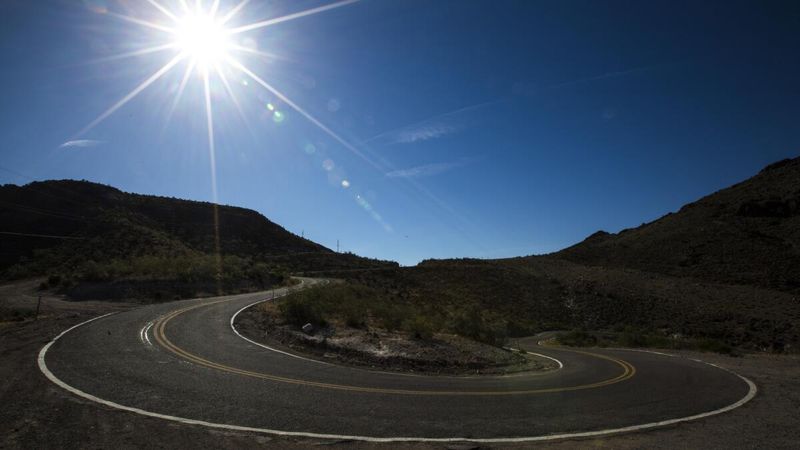
Approaching Oatman requires navigating the infamous “Sitgreaves Pass”—a nail-biting series of hairpin turns that tested early automobile travelers. The reward at the end? A time capsule where America’s most famous highway still thrums with authentic character.
Unlike manufactured tourist traps, Oatman’s charm comes from genuine historical elements that survived by chance. The burros aren’t actors in costumes but protected wildlife under Bureau of Land Management care.
Wooden buildings lean slightly with age, their warped boards telling stories of boom, bust, and unexpected revival through the unlikely partnership between a fading town and the descendants of working animals who refused to disappear.

